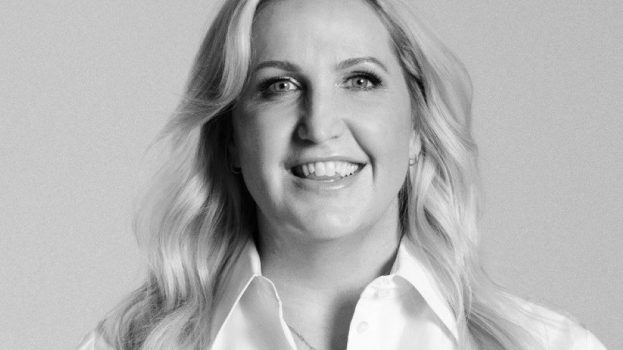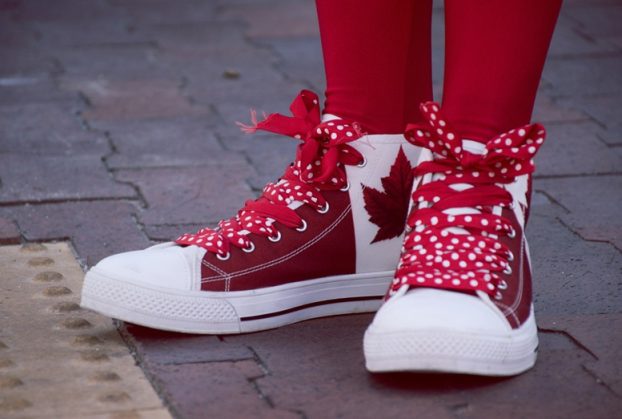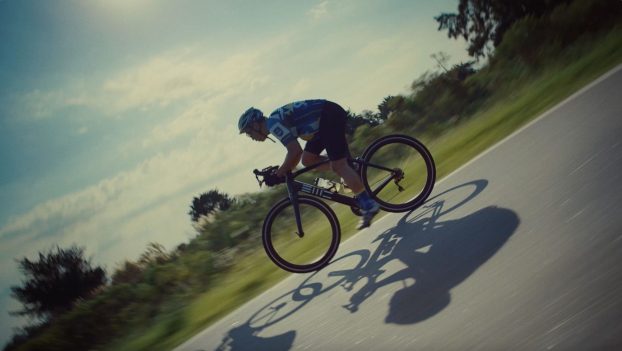It ain’t easy crafting successful social strategies. And a recent article in the Harvard Business Review suggested that CSR doesn’t even provide a competitive advantage. Others argue that cause marketing is still in its infancy, but that building solid social frameworks takes time and pays off in the long run.
There’s also the human factor. When strategy asks top execs what they care about, many describe their brand’s CSR efforts; whether it’s conservation, ethical sourcing or diversity they’re focusing on, they tell us: ‘Consumers are asking for it.’
And when you deliver, judging by the success of Dove’s ‘Evolution viral,’ the payback goes beyond purchase influence and into the realm of unparalleled WOM. Think of Home Depot, which runs an eco product program, reuses scrap material to help Habitat for Humanity and runs trade-in programs to replace old, polluting appliances with new, energy-efficient models. Feel-good messages, when done right, can translate into eco-brand positioning.
This social issues agenda also extends to philanthropy. Donations are now strategic. And this has changed the way charities need to partner with brands.
Strategy brought together eight folks in the throes of strategic social planning to discuss the hurdles, the logistics, the feasibility of carving out a distinct program, and, most importantly, the rewards of doing good.
Joan McArthur, instructor, advertising and writing, Ontario College of Art and Design
Tony Pigott, president/CEO, JWT Canada
Ian Morton, founder/CEO, Summerhill Group
Lorraine Smith, senior CSR advisor, Canadian Business for Social Responsibility
Helen Burstyn, board chair, Ontario Trillium Foundation
Dennis Darby, senior director, North American external relations, Procter & Gamble
Elizabeth Margles, VP communications, Loblaw
David Paterson, VP corporate and environmental affairs, GM Canada
Lyle Clarke, project leader, environmental strategy, LCBO
McArthur: Now that having a social strategy has become almost table stakes, how do you differentiate?
Darby (P&G): Doing the right thing is becoming the price of entry. My fear is if an entity thinks that it can use that backdrop as a competitive advantage long term, my advice would be that you can’t. Twenty years ago, I was at P&G when we did the President’s Choice diapers and the recycled content. For a very short time, people tried to make recycled content a competitive advantage. And now, it’s not. What I have seen, because I have the unfortunate fortune of having to work with the U.S. as well, is so many retailers in the U.S. have all jumped on the ‘We’re greener than you’ bandwagon. It’s like okay, hold on, where’s this all going to go? Where is the point of difference? Where are those nuggets
of insight?
Margles (Loblaw): First of all there’s this issue of transparency. You really have to be out there with why you’re doing this, what is going to be the perception of why you are doing this. Is it purely for marketing? Is it for something else? When we talk about Green Washing, we talk about people coming into this because it’s trendy. We have so many competitors who have come out with environmentally friendly bags. With our new bags [that launched last month], for example, we took the time so we can say this is Canada’s greenest bag, it’s made from 85% post-consumer waste. It’s going to hold up for over 50 round trips. And we’re closing the loop. So that when it does reach the end of its life cycle, you bring it back to the store, we’ll take it and ship it back to the manufacturer to be recycled. We’re offering it at 99 cents a bag, and every time you use it you get 10 cents back. So 10 trips and the bag has paid for itself. It’s an aggressive program, but what we learned from past mistakes is to take the time to do it right the first time, and make sure it’s embedded within the business.
McArthur: What about the issue of owning a space? Is it realistic for a brand to own a cause?
Paterson (GM): I don’t think you have to worry about owning a space. I don’t think anybody can own, for example, community and hockey. I don’t think that’s possible. But I think you can own an association with a sense of community for your brand.
Burstyn (Trillium): The ship is listing to one side. Everybody’s doing the environment and the sustainability thing right now. What happened to when everybody used to do the arts? And what happened when all the arts funding got pulled out?
McArthur: It’s a concern but once you’ve decided what to focus on, how do you get started?
Clarke (LCBO): The environmental file is so extraordinarily complex that getting your message out about the choices that truly have impact on the environment is difficult. For every organic product out there, there’s a study out there that says if everybody had that product you’d have to level a forest. Particularly, if you’re lining up your strategy with your business imperatives, there are competitors who recognize that, and are looking for ways to get their own competitive advantage by drawing attention to controversy surrounding your strategy. That is an extraordinarily difficult hurdle.
Pigott (JWT): The only way you can do it is to take care of yourself internally first. You’ve got to tighten up your own operations, or at least declare your intent before you start to tell people about it. We relaunched Shell nine years ago out of work we did in London, and, as you remember, they were in a disaster because of their operations in Nigeria, and they came around. Mark Moody-Stuart [Shell’s chair at the time] said: ‘We’re all about sustainable development now.’ You’d think they would get crucified. But the reality was the stakeholders – and we’ve measured all over the world when they went out with this message – took a look at that and decided that they were serious. And even though they were far from perfect, [the stakeholders] bought into the intent of the company. It passed the credibility test.
Paterson (GM): Sometimes, there’s so much misunderstanding and clutter out there about what it is to be green. There’s an educational part that you have to work through in your program before [it] can be successful. For example, we partnered with Car Heaven. The new cars are clean. We have a bunch of old cars on the road that aren’t as clean. And therein lay an opportunity with this Car Heaven program. We gave an incentive – when you have an old car and trade it in, we’ll give you $1,000 towards a clean car. This program accelerated and has just been voted in the budget as something that needs to expand across Canada. What started with that simple idea – that was shocking to some people ‘I thought I should drive my car for 20 years and that would be a green thing to do.’ And we’ve had 25,000 cars returned now. And it really came because of the coming together of the social plan that was well-founded, well thought-out…and I sell more cars.
Darby (P&G): We have a global architecture from which we can draw and decide what we want to do in Canada, and what isn’t practical. We have some leverage, but not a lot. If a vendor said to me: ‘We want you to put all your products in this kind of packaging in Canada,’ that would be very difficult for us. Canada is 3.5% of a global market, so it’s hard to make product design or packaging design uniquely for Canada. So you have to figure out what works and what you can take.
Margles (Loblaw): You get to the point where you say okay, right, this is what we’re doing. This is how we want to make it strategic, we want to be official about it, and then you go out there and there are 99 different standards to live up to. And which one is more relevant to your market, and which one makes more sense for you and which one is more legitimate, and have customers heard of any of them, and are any of them meaningful to anyone other than yourself? So you can see how smaller companies want to do the right thing, and then they take the first step towards trying to do that and just get overwhelmed with everything that’s out there.
McArthur: What about finding relevant causes? How important is it to make sure there’s an alignment with your brand? And, how do you establish credibility?
Morton (Summerhill): I’m a little bit biased on this one [Home Depot is a Summerhill client], but one example of a company that’s doing it well is the Home Depot. It speaks to how they’re aligning issues of the environment and society to their core business proposition. Everything from how they merchandise, to how they engage their associates, to how they deliver. My view would be it’s an evolution. Traditional CSR, which may be a flashpoint, has been about compliance. For the leading companies, it’s a part of the business strategy.
Smith (CBSR): Home Depot has its social strategy built into its structure, from the support team right down to educating the consumer. They caused changes in the supply chain. That’s huge.
Darby (P&G): Wal-Mart has set a vision: ‘We want to be the greenest company and we will drive our suppliers to help us get there.’ It’s an interesting strategy.
Burstyn (Trillium): With Wal-Mart, I can’t just think of them in the context of how green are they…I think other things; I think of labour issues.
Paterson (GM): Hummer is a brand that we’ve all heard of. You wouldn’t put it as number one on your environmental list, but it is the number one vehicle for off-roading. They have an association with
the Red Cross. When Hurricane Katrina came along, it was the only vehicle that could get into the disaster zone. So it is a very credible association.
Darby (P&G): I really think that the brand itself has to be credible in what it delivers, and consumers will vote with their feet if they don’t think it is credible. It’s got to work. You’ve gotta make sure you’re delivering the benefit of your brand, and providing a benefit beyond, which is sustainability. If it’s credible, it will be sustainable. By and large, [tech advantages] are not sustainable over time. If I say I’m doing 50% recycled material on my shampoo bottle, someone will find a way to do 100%.
Morton (Summerhill): On Tide’s Switch to Cold program, we calculated the savings that were going to accrue from that program because people want to know. We worked with energy utilities across the country. What made this program highly successful was the intersection between not-for-profits, electric utilities and brands that people trust.
Darby (P&G): When you do something, whether it’s Tide or Car Heaven, business is being held to a standard and you have to be able to say here are some metrics, because consumers can be very skeptical. Stakeholders are holding us accountable, too.
McArthur: Let’s talk more about metrics. How do you measure social impact?
Paterson (GM): We give away minivans to the United Way across Canada to drive in their communities, so people see a GM vehicle on the road, and we call it Community Wheels. We do try and measure the results. But at the end of the day, what blew away everything else was the story of a woman who used the van to see the sea for the last time before she died. It spread as a great story. She accounted it to the fact that she had the van. And that story kept me funded for the next three years. Sometimes we do get a little over the top on the number crunching side.
Darby (P&G): When I ask for money for a cause, the application form for me as a country leader to get money from the global fund takes three hours to fill out. You must report each year, and if it doesn’t meet the metrics in terms of how many lives you touch or how many children you impact or whatever the metric is, you don’t get the money the next year. You have to say, we gave this money to Junior Achievement, and we went into 15,000 classrooms, so the money was spent the way we said it would be…. With corporate philanthropy, someone comes in and says: ‘Give me $100,000.’ I say: ‘Tell me what you’re going to do with it, and how you’re going to measure it.’
Clarke (LCBO): I think more and more companies are going to look for causes that have measurable results. They don’t want to just measure their CSR by the value of a cheque they write. Are young women feeling better about themselves because of Dove? It’s that kind of thing that companies will be looking for because consumers are demanding results. Particularly if you’re going from a middle-of-the-pack position to a leadership position. The only way to get there is tangible, measurable, visible results.
Morton (Summerhill): Environment is one of those nice things where there are tangible metrics you can measure, and that does have a business and social interest.
You can measure carbon, you can measure carbon monoxide.
McArthur: Picking up on the Dove example – with a multibrand company, how do you credibly support a cause? Here’s Unilever with Dove, saying have some respect for women and don’t marginalize them, and then you’ve got Axe….
Darby (P&G): We have 172 brands. The brand we have focused on is Tide, with Tide Coldwater. Tide is arguably the most iconic brand in consumables, and the oldest – it started in 1945. So you can do things credibly on Tide because it works. It’s a good example of a technology that does the right thing and by the way it has some environmental benefits. But people buy it because it works and because it’s Tide. You have to deliver on the promise of the brand, no matter what you do.
The burden of size in some cases is that you may not have to have a social or environmental platform for every brand, but you’d better make sure that your long-standing system for safety and efficacy, and how you source your materials, is solid.
Margles (Loblaw): If you look at President’s Choice, there are thousands of SKUs. PC is the brand, but we have everything from detergent to pizza sauce to ice cream. But PC has a brand identity and a brand standard. The brand always has to stand for the same thing.
Pigott (JWT): It makes me wonder to what extent companies, particularly multibrand companies, are finding themselves creating a strategic framework for this rather unwieldy subject. Right down to an audit and evaluation of which brands in the portfolio can carry a social strategy, because I agree that not everyone can. But in some sense there’s definitely opportunity there.
McArthur: How are most companies doing, when it comes to crafting solid social strategies?
Paterson (GM): The ugly truth is there’s been a lot of non-strategic CSR.
Pigott (JWT): I think that what it comes back to is that we’re in the early stages of making this a strategic element of a brand’s DNA. So how that marches forward should be based on a set of principles of success. I don’t think there are very many good cases out there, and it certainly won’t just be episodic, by doing an activity. It has to be a really smart, well-thought-through demonstration of what the brand stands for.
The things that we’ve seen in the research from around the world on what creates loyalty and high levels of emotional connectivity aren’t the functional things, because those are duplicated very quickly, and I think that’s going to be true in the area of social strategy activities. So, if you do a recycled bag, someone’s going to duplicate it. It’s the demonstration of leadership and momentum and all those caring things about the community that a brand needs to create around itself. That’s where the emotionality comes in. What we’re arguing with our clients about is that the top of the pyramid – all of that emotional territory – can really be enhanced by an authentic social strategy, because these things mean something to people, over and above the fundamental benefits you get from a brand.
Clarke (LCBO): I think the difference between efforts that are successful and efforts that are unsuccessful has to do with the fundamental long-term objective of the strategy. If you’re looking at simply getting a sales bump on a brand or a short-term lift in traffic, that’s not going to get you there. What’s going to get you there is if the strategy is motivated by building a relationship with your customer that reflects on their emotional connection with your brand.
If you look at the companies that are successful long term with this, it’s the companies that have built a relationship with their customers. Tim Hortons is a perfect example. It’s an iconic brand today not just because it was started by a hockey player, but because of the connection with the community that’s part of their culture that they drive into their associates and into everything that they do. They certainly make the customer feel like Tim Hortons is a part of the community.























